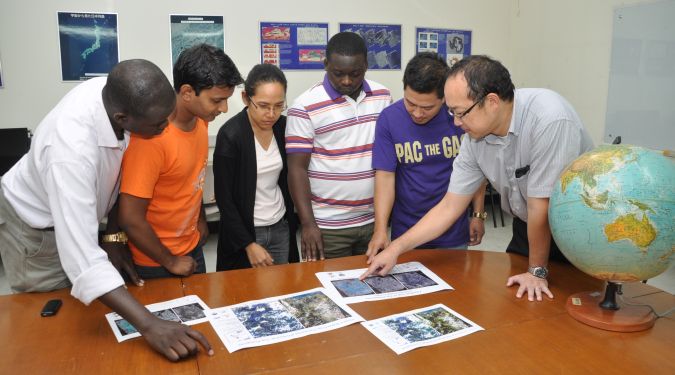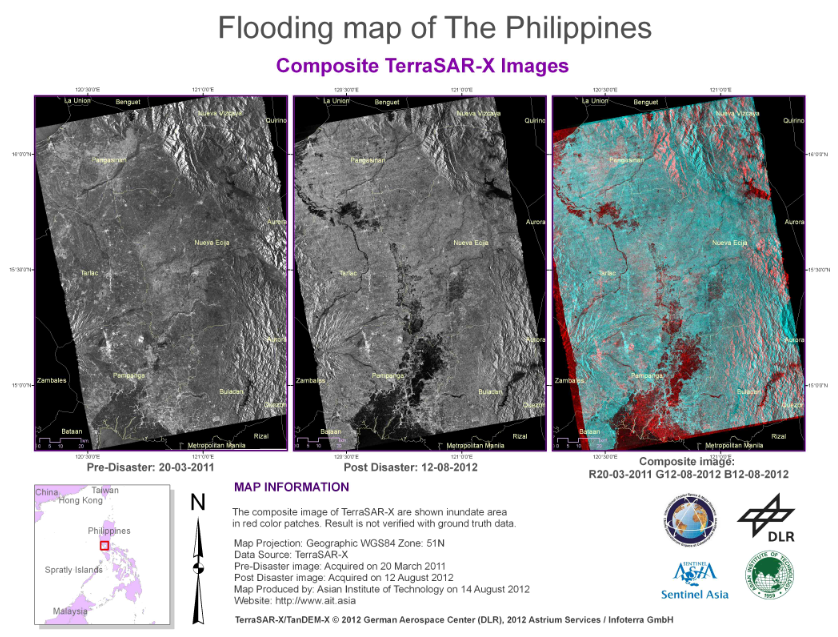Dr. Masahiko Nagai, Associate Director of AIT’s Geoinformatics Center
(GIC/AIT), spearheaded efforts to create up-to-date satellite-generated
maps for scientists at the Manila Observatory and National Institute of
Geological Sciences, University of the Philippines.
For weeks the country was ravaged by severe tropical storms
that impacted millions and flooded much of the capital,
Manila.
Witnessed from space, a series of storms
hid the archipelago-nation from view. Down on the ground,
beneath the canopy of cloud, water was building. As tropical storm
Kai-tak swept across the Philippines' main island of Luzon
this week, torrential downpours contributed to more deadly
flooding.
Starting on August 8, while collaborating with a number of space
agencies from around the world, Dr. Nagai analyzed satellite images of
Metro Manila and Luzon Island taken before and during the height
of the flood. On August 14 the team at GIC/AIT produced a color-coded,
high-resolution composite image map of highly flooded
areas. It pinpoints the specific disaster
areas.
"The maps should assist emergency response operations by providing
officials with more precise data on exactly where floods are
occurring," Dr. Nagai said.
AIT is a member of Sentinel Asia, which is a regional network for
supporting disaster management activities in the Asia-Pacific region by
applying space-based technology, such as earth observation satellite
data.
Given the scale of the disaster, Dr. Nagai was nominated by Sentinel
Asia’s International Charter Space and Major Disasters as Project
Manager for the international effort to map the flood.
The Japanese expert received satellite imaging radar from the Canadian Space Agency
(CSA) and the German
Aerospace Center (DLR). High-resolution images from the United States Geological Survey (USGS)
provided details of the extent of flooding in Manila, while France’s Centre
National d'Études Spatiales (CNES) helped map areas just north of
the Philippines' capital region.
Dr. Nagai also received data from the Indian Space Research Organisation
(ISRO), DMC International Imaging
Ltd (DMCii), UK, Japan Aerospace Exploration Agency (JAXA), and Taiwan’s National
Space Organization (NSPO).
Previously, the School of Engineering and Technology faculty member
was the international project manager to map the Japan tsunami
(March 2011) and Thailand flood (October 2011) disasters. "We learned
so much from those emergencies, and were able to respond much faster to
this situation in the Philippines," Dr. Nagai said.
Also made easier was the fact that some of his remote sensing and
geographic information systems (RS-GIS) graduate
students hail from the Philippines. One student helped
in confirming specific sites, he said. "AIT's
internationality and connectivity really allow us to respond and
assist the Asia-Pacific region, this time in the
Philippines."
Details on the Disaster Charter are available at this
link, and about Sentinel Asia at this
link.


